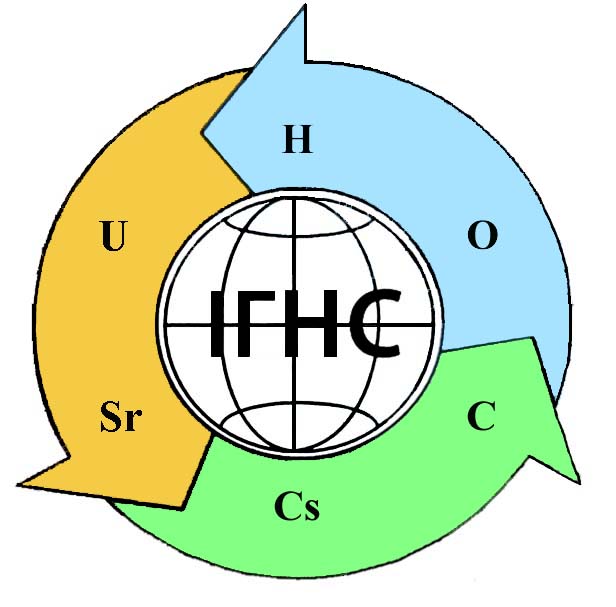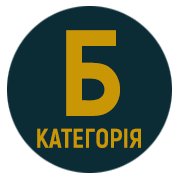THEORETICAL STUDY OF CONVERSION OF HALON CBrClF2 INTO ENVIRONMENTAL FRIENDLY SUBSTANCES
Keywords:
environmentally hazardous substances, halons, flame retardants, quantum-chemical calculation.Abstract
The paper considers the problem of disposal of environmentally hazardous chemicals that were used in the past as effective extinguishing agents. The urgency of the issue is related to the large number of herbicides, pesticides, Freon and other hazardous chemicals, which are already out of use, or even banned for use, but in large quantities are stored in warehouses and require disposal. Experienced way to find effective methods of disposal of toxic substances is dangerous and economically inexpedient. The paper shows the possibility of using quantum chemical methods for the theoretical study of possible ways of chemical transformations of the freon CBrClF2 into the useful for industry substance difluoroethen CF2 = CH2, which manifests extinguishing properties, but does not apply to ozone-depleting compounds. It is shown that the conversion of CBrClF2 with the addition of methane is more energetically favorable than with the addition of hydrogen and likely than direct thermal decomposition. Among the by-products of the conversion as a result of quantum chemical calculations were detected such particles as the CF2 :, involved in many of the elementary stages of minimum energy and trifluorometane CF3H, which itself exhibits inhibitory properties with respect to the flame and in many studies is offered as an alternative extinguishing agent. In addition, it serves as a precursor for other, more effective flame retardant CF3I, which best can replace banned Freon CF3Br, as exhibits similar physical properties.
References
Міністерство екології та природних ресурсів України: Доповідь ―Непридатні пестициди і проблеми їх знешкодження‖. – 2009. – [Електронний ресурс]. – Режим доступу: http://www. menr. gov. ua/content/article/4167.
Montreal Protocol on Substances that Deplete the Ozone Layer, with later amendments, http://www.ciesin.org/TG/PI/POLICY/montpro.html.
W. Grosshandle, R. Gann, W. Pitts (eds.), Evaluation of Alternative inFlight Fire Suppressants for Full-Scale Testing in Simulated Aircraft Engine Nacelles and Dry Bays, NIST SP 861, April 1994, U.S. Department of Commerce, Washington, DC.
R. Gann (ed), Fire Suppression System Performance of Alternative Agents in Aircraft Engine and Dry Bay Laboratory Simulations, Volumes. I and II, NIST SP 890, U.S. Department of Commerce, Washington, DC, November 1995.
J. Yang, T. Cleary, T. Vázquez et. al. ―Optimization of system discharge,‖ in Chapter 8, Fire Suppression System Performance of Alternative Agents in Aircraft Engine and Dry Bay Laboratory Simulations, Vol. I, Gann, R.G. (ed.), NIST SP 890, U.S. Department of Commerce, Washington, DC, November 1995.
Kennedy., E.M.Yu, H Kennedy, J. Mackie, B. Dlugogorski // Experimental and Computational Studies of Reaction of Halon 1211 (CBrClF2) – 14th Proceedings, HOTWC. – 2005. – Albuquerque. – P.1-9
Caimao Luo, Bogdan Z. Dlugogorski and Eric M. Kennedy, Effect of hydrofluorocarbons and perfluorocarbons on suppression efficiency of CF3I // 14th Proceedings, HOTWC. – 2005. – Albuquerque. – P.15-20
Marshall P., A computational study of the thermochemistry of bromine- and iodine-containing methanes and methyl radicals / P. Marshall, G.N.Srinivas, M. Schwartz M.// J Phys Chem A. 2005 Jul 21;109(28):6371-9.
Wuebbles D. J. Evaluation of Ozone Depletion Potentials for Chloro-bromomethane (CH2ClBr) and 1-Bromo-propane (CH2BrCH2CH3)/ D.J.Wuebbles, A.K.Jain, K.O.Patten and P. S.Connell // Atmospheric Environment. – 1998. – Vol. 32, No. 2. – P. 107–113.
Uddin M.A., Process for conversion of suplus halons, CFCs and contaminated HFCs into fluoroelastomer precursors / M.A. Uddin, E.M;Yu,H. Kennedy, E.M;Yu,H.Dlugogorski, HOTWC 14th Proceedings. – 2004, Albuquerque, NM. – P.1-10
Lee E.P.F. DFT and ab initio calculations on reaction between fluorine atoms and the fire suppressant, 2-H heptafluoropropane / E.P.F. Lee, J.M.Dyke, W.K.Chow, F.T. Chau, D.K.W.Mok //Chemical Physics Letters. – 2006. – V. 417. – P. 25.
Riches J. A screening tool for halon alternatives based on the flame ionization detector / J.Riches, L.Knutsen, E.Morrey // Fire Safety Journal. – 2002. – V. 37. – P. 287–301.
Babushok V., Modelling of hydrogen fluoride formation from flame suppressants during combustion / V.Babushok, D.R.Burgess, W.Tsang // Halon Options Technical Working Conference: 9–11 May, 1995: abstr. – Albuquerque, NM. – PP. 239–249.
Azatyan V.V., Shebeko Yu.N., Shebeko A.Yu., Navzenya V.Yu., Tomilin A.V. An influence of oxygene content in an oxidizing atmosphere on inhibitive action of fluorinated agents on hydrogen flame // Journal of loss prevention in the Process Industries . – 2007. –20. – PP. 494–500.
Westbrook, C. K. Inhibition of Hydrocarbon Oxidation in Laminar Flames and Detonations by Halogenated Compounds / Proc. Combust. Inst. – 1982. – V. 19. – P. 127.









